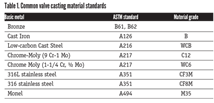EIA's Annual Energy Outlook 2022
Through 2050, petroleum and natural gas remain as the most consumed energy sources, but the fastest growing sector is renewable energy.
Edited by Margo Ellis

The U.S. Energy Information Administration released its Annual Energy Outlook 2022 that includes projections to 2050.
Petroleum and natural gas remain the most consumed sources of energy in the United States through 2050, but renewable energy is the fastest growing.
- Motor gasoline remains the most prevalent transportation fuel despite electric vehicles gaining market share.
- Energy-related carbon dioxide (CO2) emissions dip through 2035 before climbing later in the projection years.
- Energy consumption increases through 2050 as population and economic growth outweighs efficiency gains.
- Electricity continues to be the fastest-growing energy source in buildings, with renewables and natural gas providing most of the incremental electricity supply.
Wind and solar incentives, along with falling technology costs, support robust competition with natural gas for electricity generation, while the shares of coal and nuclear power decrease in the U.S. electricity mix.
- Electricity demand grows slowly across the projection period, which increases competition among fuels.
- Renewable electricity generation increases more rapidly than overall electricity demand through 2050.
- Battery storage complements growth in renewables generation and reduces natural gas-fired and oil-fired generation during peak hours.
- As coal and nuclear generating capacity retire, new capacity additions come largely from wind and solar technologies.
U.S. crude oil production reaches record highs, while natural gas production is increasingly driven by natural gas exports.
- U.S. production of natural gas and petroleum and other liquids rises amid growing demand for exports and industrial uses.
- Driven by rising prices, U.S. crude oil production in the Reference case returns to pre-pandemic levels in 2023 and stabilizes over the long term.
- Refinery closures lower domestic crude oil distillation operating capacity, but refinery utilization rates remain flat over the long term.
- Consumption of renewable diesel increases as a share of the domestic fuel mix.
RELATED CONTENT
-
Proper Care of Knife Gate and Slurry Valves
How to resolve—and avoid—field failures of knife gate and slurry valves
-
The Diverse Role Valves Play in the Chemical Industry
The chemical industry is extremely diverse with more than 60,000 known products. Like all process industries, the chemical industry needs valves designed for safe, efficient and reliable process operation.
-
Paint & Coatings
A walk through a typical valve distributor’s warehouse will yield a contrasting view of either silver or black products.











 Unloading large gate valve.jpg;maxWidth=214)